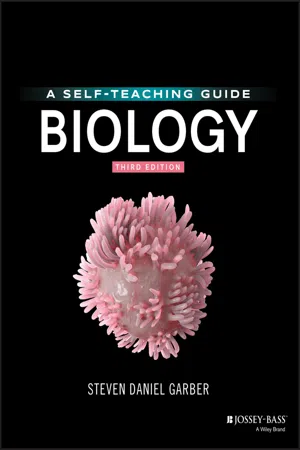Biological Sciences
How do Protists Reproduce
Protists reproduce through a variety of methods, including asexual reproduction such as binary fission, multiple fission, and budding, as well as sexual reproduction involving the fusion of gametes. Asexual reproduction allows for rapid population growth, while sexual reproduction promotes genetic diversity. These diverse reproductive strategies contribute to the adaptability and success of protists in various environments.
Written by Perlego with AI-assistance
Related key terms
5 Key excerpts on "How do Protists Reproduce"
- eBook - ePub
- Britannica Educational Publishing, Kara Rogers(Authors)
- 2010(Publication Date)
- Britannica Educational Publishing(Publisher)
Multiple fission also occurs among protists and is common in some parasitic species. The nucleus divides repeatedly to produce a number of daughter nuclei, which eventually become the nuclei of the progeny after repeated cellular divisions. There are several kinds of multiple fission, often correlated with phases or stages in the full life cycle of a given species. The number of offspring or filial products resulting from a multiple division (or very rapid succession of binary fissions) may vary from four to dozens or even hundreds, generally in a short period of time. Modes of such multiple fission range from budding, in which a daughter nucleus is produced and split from the parent together with some of the surrounding cytoplasm, to sporogony (production of sporozoites by repeated divisions of a zygote) and schizogony (formation of multiple merozoites, as in malarial parasites). The latter two phenomena are characteristic of many sporozoan protists, which are obligate parasites of more advanced eukaryotes. Some multicellular algal protists reproduce via asexual spores, structures that are themselves often produced by a series of rapid fissions.Even under a light microscope, differences can be seen in the modes of division among diverse groups of protists. The flagellates, for example, exhibit a longitudinal, or mirror-image, type of fission (symmetrogeny). The ciliates, on the other hand, basically divide in a point-by-point correspondence of parts (homothetogeny), often seen as essentially transverse or perkinetal (across the kineties, or ciliary rows). In general, most amoebas exhibit, in effect, no clear-cut body symmetry or polarity, and thus their fission is basically simpler and falls into neither of the categories described above.Sexual phenomena are known among the protists. The erroneous view that practically all protists reproduce asexually is explained by the fact that certain well-known organisms, such as species belonging to the genera Euglena and Amoeba , do not demonstrate sexuality. Even many of the unicellular species can, under appropriate conditions, form gametes (male and female sex cells, although sometimes multiple sexes are formed, which makes the terms “male” and “female” inappropriate), which fuse and give rise to a new generation. In fact, sexual reproduction—the union of one male and one female gamete (syngamy, or fertilization)—is the most common sexual phenomenon and occurs quite widely among the protists—for example, among various flagellate and amoeboid groups and among many parasitic phyla (e.g., in Plasmodium , the genus of malaria-causing organisms).Conjugation, the second major kind of sexual phenomenon and one occurring in the ciliated protists, has genetic and evolutionary results identical to those of syngamy. The process involves the fusion of gametic nuclei rather than independent gamete cells. A zygotic, or fusion, nucleus (not a true zygote) is produced and undergoes a series of meiotic divisions to produce a number of haploid pronuclei. All but one of these pronuclei in each organism will disintegrate. The remaining pronuclei divide mitotically. One pronucleus from each organism is exchanged, and the new micronuclei and macronuclei of the next generation are formed. Following the exchange of the pronuclei and the subsequent formation of new micronuclei and macronuclei in each organism, a series of asexual fissions, accompanied by mitotic divisions of the new diploid micronuclei, occurs in each exconjugant line. The new polyploid macronuclei are distributed passively in the first of these divisions. In subsequent fission, the macronuclei duplicate themselves through a form of mitosis. This last stage constitutes the only reproduction involved in the process. - eBook - ePub
Thorp and Covich's Freshwater Invertebrates
Ecology and General Biology
- James H. Thorp, D. Christopher Rogers(Authors)
- 2014(Publication Date)
- Academic Press(Publisher)
Protozoa can reproduce or by both means. Asexual reproduction takes place by binary fission (see below), budding (for example, in suctorian ciliates, which produce an internal bud that gives rise to a dispersive larva), or multiple division. Sexual reproduction is widespread, and all degrees of difference between the two fusing cells are found. The sexual process of “conjugation” (when cells fuse and exchange genetic material), for example, is unmistakable in the ciliates. However, the asexual process of binary fission, in which a parent cell grows and divides into two equal-sized daughter cells, is the most frequently observed reproductive process in protozoa. Many protozoa have complicated life cycles that involve an alternation of sexual and asexual generations. The timing of sex appears to be crucial for the adaptive response in such protozoa, and the process of sexual recombination, generating high genetic diversity at the beginning of the growing season or during the initial stages of colonization, followed by asexual (clonal) reproduction and clonal selection, is a powerful tool for generating local adaptation.Sexual processes do not necessarily result in an increased number of individuals and so are not, strictly speaking, methods of reproduction, but rather methods of genetic recombination.Biological Diversity of Free-Living Protozoa
Functional Groups of Free-Living Protozoa
Protozoan morphology (especially of the food-capturing organelles) is closely linked to the way a protozoon functions as a grazer. Therefore, classification of free-living protozoa into broad morphological groups simultaneously allocates them to broad functional groups. The three broad morphological–functional groups, i.e., the ameboid, the flagellated, and the ciliated protozoa, each have their own strengths as a phagotroph. Representatives of all three may feed on the same type of microbes in the same place (e.g., in an aquatic sediment), but they will differ in the mechanics and efficiency of capture of any particular food particle. A filter-feeding flagellate will have a relatively large filter area, a high volume-specific clearance, and competitive superiority over filter-feeding ciliates when grazing on planktonic bacteria. A helioflagellate (with very fine pseudopodia called axopods) and a suctorian ciliate (with sucking tentacles) will both practice diffusion feeding, but the former will be adapted for snaring bacteria, whereas a diffusion-feeding suctorian will specialize in trapping flagellates and ciliates (Figures 7.1 and 7.2 - eBook - ePub
Biology
A Self-Teaching Guide
- Steven D. Garber(Author)
- 2020(Publication Date)
- Jossey-Bass(Publisher)
4 Reproduction ASEXUAL REPRODUCTION Asexual reproduction is quite simple compared to sexual reproduction in that it requires only one organism; no partner is necessary. Therefore, in most asexual species, every mature individual can reproduce, enabling the population to increase far more rapidly than the otherwise comparable sexual species that require two individuals to reproduce. Many organisms take full advantage of asexual reproduction. For instance, each time an amoeba divides, it produces two genetically identical replicas of itself. And many species of single-celled as well as multicellular organisms produce asexually reproductive cells known as spores that float in the air or water and eventually produce genetic replicas of the parent. Another asexual mode of reproduction involves budding, as illustrated in Figure 4.1. In budding, part of the parent sprouts smaller offspring that separate and become distinct individuals. Many plants sprout new plants from leaves, roots, or some other part of the parent. This is called vegetative reproduction. In parthenogenesis, an egg can develop into an adult without being fertilized by a sperm cell. Another form of asexual reproduction is fragmentation, in which part of an organism separates from the whole, and a new individual regenerates from that part. Such fragmentation sometimes occurs when an organism is in danger; pieces of the injured organism then regenerate into whole organisms. Starfish, for example, have this reproductive capacity. Worms and planaria can also fragment and then regenerate the missing portion of their body. Cloning is another type of asexual reproduction that involves the production of copies that are genetically identical, although they may not look identical. This happens with many plant species – such as when one plant grows from a seed and then many other plants sprout up from the roots - eBook - ePub
- Richard E. Blackwelder(Author)
- 2018(Publication Date)
- CRC Press(Publisher)
There are four basic types of Asexual Reproduction that can be listed. They are (1) production of unicellular reproductive bodies — agametes, (2) production of multicellular reproductive bodies, (3) budding, and (4) fragmentation. Under closer inspection it is evident that the agametes of (1) above are, in reality, of several unrelated types and may involve meiosis, whereas (3) and (4) are indistinguishable in many instances. Furthermore, both budding and fragmentation, although usually described in adults, can occur as early as the embryo, and agametes can be produced either by “adults” or by other agametes.The term monogony is used in Annelida as reproduction which is wholly asexual. It would be more logically used for reproduction involving only one parent. Synonyms for asexual reproduction are agamogenesis and hypogenesis.Spores and agametes — The unicellular reproductive bodies called agametes occur only in Protozoa, Mesozoa, and possibly the Monoblastozoa (and of course as spores in plants). They take these forms:- Amoeboid swarmers produced by multiple fission (Sarcodina)
- Ciliospores by multiple fission (Ciliata: Ichthyophthirius)
- Flagellated swarmers produced by multiple fission (trypanosomes)
- Merozoites produced by multiple fission — merogony (Sporozoa)
- Sporozoites produced by multiple fission (Sporozoa)
- Spores produced by multiple fission (Sporozoa)
- Agametes by fission of axial cells (Dicyemida)
- Agametes by fission of agametes (Dicyemida)
- Axoblasts in nematogen (Dicyemida)
- Pseudo-eggs from surface of infusorigen (Dicyemida)
- Agametes from a plasmodium (Orthonectida)
- Ciliated swarmers, possibly by multiple fission (Monoblastozoa)
- Gymnospores from encysted gregarines (Sporozoa) which are true gametes
Agamogony is defined as reproduction by means of agametes, which are diploid reproductive bodies that undergo no union. It is usually called sporogony in Protozoa, but also spore formation or sporulation.Sporogony — Although definitions differ and usages are at variance, an agamete enclosed in a resistant membrane is usually called a spore. One not so protected is more likely to be called a sporozoite. Both are produced by sporogony. Sporogony is asexual, but it always follows closely after some process that can be called sexual. It occurs only in the Protozoa (Sarcodina, Sporozoa). Palintomy - eBook - ePub
- Volodymyr Ivanov(Author)
- 2020(Publication Date)
- CRC Press(Publisher)
8Reproduction, Proliferation, and Growth
Reproduction of Viruses
The reproduction of viruses is defined as an increase in the number of viral particles. There are six basic stages in viral reproduction:- 1. attachment: a specific binding between virus and host cell, determining the host range of the virus
- 2. penetration: when the attached virus enters the host cell
- 3. uncoating: when the viral envelope is degraded, thus releasing the viral nucleic acid
- 4. replication: synthesis of viral nucleic acid and protein
- 5. self-assembly of the virus particles
- 6. lysis of the host cell and the release of viruses
Reproduction of Prokaryotes
Reproduction is defined as an increase in the number of cells. Growth is defined as an increase in biomass.The most common method of cell reproduction in Bacteria and Archaea groups is an increase in cell volume, followed by the binary fission of the adult cell to two almost equal daughter cells (Figure 8.1 ).FIGURE 8.1 Reproductive cycles of (a) rod-shaped and (b) spherical prokaryotic cell by binary fission.Other, less common methods of cell reproduction include multiple fission or budding (Figure 8.2 ). In this case, mother and daughter cells have quite different sizes, shapes, and other properties.FIGURE 8.2 Reproductive cycles of prokaryotic cells with multiple fission (a and b) or budding (c). The bud is formed on a mother cell. The bud then grows and is transformed into a daughter cell that is separated from the mother cell.Vegetative Reproduction of Microscopic Eukaryotes
The reproduction of microscopic eukaryotes is either performed by vegetative reproduction, which starts with the growth of cell biomass and is followed by the separation of mother and daughter cells, or by other methods of asexual and sexual reproduction.For example, vegetative reproduction of mycelial fungi takes place by the elongation and separation of cells at the tip of the hyphae. The network of hyphae, mycelium, is an effective structure for penetrating the soil and adsorbing nutrients from the terrestrial environment. Mycelial fungi grow by the elongation of the hyphae at their tips. Nutrients adsorbed by mycelium are distributed between the cells of the mycelium.
Index pages curate the most relevant extracts from our library of academic textbooks. They’ve been created using an in-house natural language model (NLM), each adding context and meaning to key research topics.




